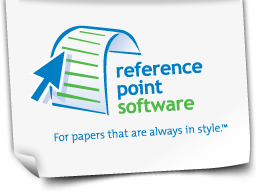Proper Formatting Rules When Including Mathematics in Your Paper and How Using APA Formatting Software Can Help
Before you applied to college, you probably had little experience including mathematical formulas into your writing assignments. Yes, youΓÇÖve had to read sentences describing a math problem, but have you written about a math problem or have you incorporated a mathematic formula into one of your social sciences or nursing classes? If not, this presents a new challenge, one that has rules and writing formats requiring you to commingle these two seemingly disparate disciplines into one cohesive paper.
It is often beneficial to use the assistance of MLA or APA Formatting Software to assure proper formatting when using mathematical equations in your paper. A good formatting software will take some of the pain out of writing using the proper format and will allow you to concentrate on the writing itself. This makes getting your paper done much more stress free than doing it all by hand.
Here are five formatting rules for you to follow when combining the written word with mathematic formulas.
1. Proper Spacing
You donΓÇÖt want to turn off a reader before they even begin. Subconsciously, readers make assumptions about a paper simply by looking at it. If you write in solid prose in long paragraphs with your mathematical calculations worked into the text, it will appear long and boring. If you are sparse with your words and heavy on the formulas, your paper will look complicated. You need to find a healthy balance.
First, keep your paragraphs relatively short. Second, when you introduce a mathematical calculation into your writing, the complexity of the formula will alter how you write it on the page. For example, you can write simple formulas into the sentences describing them. However, if you are introducing an important or long formula, itΓÇÖs best to add the formula on its own line and center it.
2. Long Form versus Symbols
Complex math uses variables, symbols, and abbreviations extensively. However, when you explain a formula in your prose, you need to describe symbols and sometimes variables in long form. For example, in a mathematic formula, an arrow pointing left with a line below it represents ΓÇ£less than or equal toΓÇ¥. It is proper formatting to use the symbols in the equation. However, when you are explaining the formula, you need to write the words ΓÇ£less than or equal toΓÇ¥ in long form. The same holds true for the ΓÇ£equalsΓÇ¥ sign. As for variables, only include them in the long form prose if they bring clarity to your statement.
3. DonΓÇÖt Start a Sentence with a Variable
When you explain a formula in your writing, you donΓÇÖt want to start a sentence using a variable. For example, if you have the formula:
Don’t start describing the formula by saying something like, “T is the …” Instead, you will want to use phrasing similar to, “The total time of infusion (T) represents …” And when you do include variables in your text, italicize them so the reader doesn’t confuse them with the rest of the content.
4. Citing Your References
Just as you need to include your references in other writing assignments, you may need to cite sources for the mathematic formulas you include in your paper. Your paper will lack credibility if you simply introduce a formula without naming its source. Plus, plagiarism is an academic no-no. Give credit where credit is due. If you derive a formula on your own, you will need to explain how in plain English terms.
5. Following the Proper Formatting Rules
While English grammar and mathematics have their own writing conventions to follow, you need to know which writing style ΓÇô APA, MLA, and so forth ΓÇô your professor assigns to you. This will affect how you refer to other reference documents you use to support your paper, amongst other formatting issues. If you are unfamiliar with the requirements for your paperΓÇÖs writing format, you can research the most current revisions of their formatting guidelines or you can purchase formatting software to save time.
David Plaut is the founder of Reference Point Software (RPS). RPS offers a complete suite of easy-to-use formatting template products featuring MLA and APA style templates, freeing up time to focus on substance while ensuring formatting accuracy. For more information, log onto http://www.referencepointsoftware.com/ or write to:
info @ referencepointsoftware.com
Reference Point Software is not associated with, endorsed by, or affiliated with the American Psychological Association (APA) or with the Modern Language Association (MLA).
